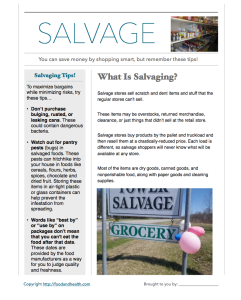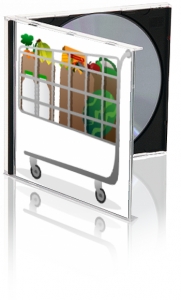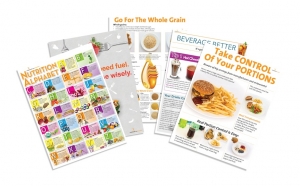Salvaging. That’s what my friend called it when she invited me to go shopping with her. She had a long list of salvage stores in the area that she wanted to visit. Intrigued, I decided to give it a try.
 If you’ve never heard of such a thing, here’s the scoop.
If you’ve never heard of such a thing, here’s the scoop.
Salvage stores sell scratch and dent items and stuff that the regular stores can’t sell. These items may be overstocks, returned merchandise, clearance, or just things that didn’t sell at the retail store. Salvage stores buy products by the pallet and truckload and then resell them at a drastically-reduced price. Each load is different, so salvage shoppers will never know what will be available at any store.
Most of the items were dry goods, canned goods, and nonperishable food. The salvage store also had paper goods, pet food, and some cleaning supplies.
Many of the products were past the dates on the labels. The “food safety hairs” on the back of my neck started to go up quickly. That said, by being cautious and paying attention, I was able to find some real bargains.
How?
Well, salvage shopping feels like a balancing act to me. Some foods are perfectly safe, while others needed to be skipped. Here’s the lowdown on what you need to know if you or your clients want to pursue salvage shopping.
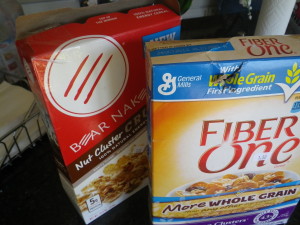 The expiration date on food has nothing to do with food safety. There is nothing “illegal” about stores selling food that is beyond the expiration date. The one exception here is infant formula and some baby food.
The expiration date on food has nothing to do with food safety. There is nothing “illegal” about stores selling food that is beyond the expiration date. The one exception here is infant formula and some baby food.
Packages frequently have words like “best by” or “use by” on them. This does not mean that you can’t eat the food after this date. These dates are provided by the food manufacturers as a way for you to judge quality and freshness. Putting these dates on packages is entirely at the discretion of the manufacturer. After all, they would like you to eat their food when it is at its best.
Many unopened shelf-stable products will be of good quality long past their sell-by dates. Foods like mustard, ketchup, pickles, crackers, and cereal may lose quality, color, and texture, but can remain perfectly safe to eat.
Here’s a little key to those dates:
- The sell-by date tells the store how long to display the product for sale.
- The use-by date is the last date recommended for use of the product while it’s at peak quality.
- The best-if-used by dates is recommended for best flavor or quality. It is not a purchase or a safety date.
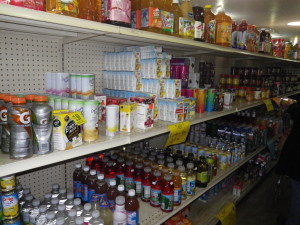 Non-perishable shelf-stable foods such as sugar, dried beans, spices and canned goods do not spoil unless they are handled carelessly. They will lose quality and nutrition, however, if stored for a long time, even if kept under ideal conditions.
Non-perishable shelf-stable foods such as sugar, dried beans, spices and canned goods do not spoil unless they are handled carelessly. They will lose quality and nutrition, however, if stored for a long time, even if kept under ideal conditions.
Some shelf-stable foods are called semi-perishable and have a shorter shelf life. These are foods like flour, grain, dried fruits and dry mixes. They can usually be kept unopened for 6-12 months without much noticeable quality loss.
Commercially-processed low-acid canned goods like meat, poultry, fish, soups, corn, carrots, potatoes will usually keep (unopened) in a pantry for 2-5 years. High acid foods like juices, pickles, sauerkraut and items in vinegar-based sauces will generally keep for 12-18 months.
When shopping, avoid dusty cans or torn labels, this may indicate very old stock.
Don’t purchase bulging, rusted, or leaking cans. These could contain dangerous bacteria.
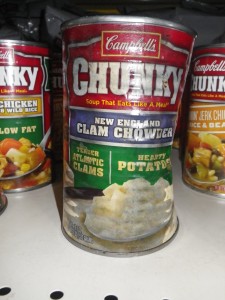 Be wary of deeply dented cans. Carefully check dented cans before buying them. Cans with dents may have exposed the contents to air, which results in the perfect environment for bacteria to grow.
Be wary of deeply dented cans. Carefully check dented cans before buying them. Cans with dents may have exposed the contents to air, which results in the perfect environment for bacteria to grow.
Watch out for pantry pests (bugs) in salvaged foods. These pests can hitchhike into your house in foods like cereals, flours, herbs, spices, chocolate and dried fruit. Storing these items in air-tight plastic or glass containers can help prevent the infestation from transferring from one food to another in the pantry.
Consider the geographic area of where you live. Where have your salvage foods been stored? Food stored in warm and humid climates tends to have a shorter shelf life.
Don’t overbuy. Don’t get so excited about the deals you’re getting that you buy more than you can eat in a reasonable amount of time.
Once you get the items home, store them in a cool, dry place and rotate them, using the oldest first.
Remember the old saying “when in doubt, throw it out!”
I’ll add this… a deal isn’t a deal if you end up throwing the food out later. When you salvage, shop smart!
By Cheryle Jones Syracuse, MS, Professor Emeritus at The Ohio State University
Want to share salvaging tips with your clients? Here’s a SalvageHandout, just for you. Get your copy now!
For healthy shopping advice and guides to food safety, look no further than the Nutrition Education Store!
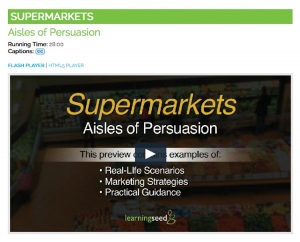
Supermarket Shopping DVD
Plus, there are tons of new materials in the store. Check them out, or just review the featured category below…
There are a whole bunch of new nutrition posters, and I really think you’ll like what you see. Help your clients choose healthful beverages, make balanced meal decisions, track their progress, and review nutrition basics, all with colorful and engaging posters. Take a look today!
New Products Available Now
Check out the Nutrition Nuggets page which features over 20% off three special products each week.
Connect with us on Google Plus















